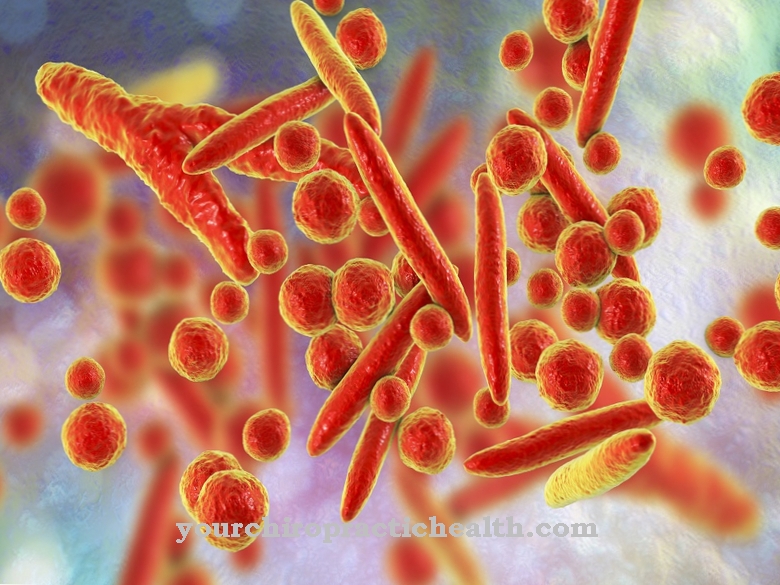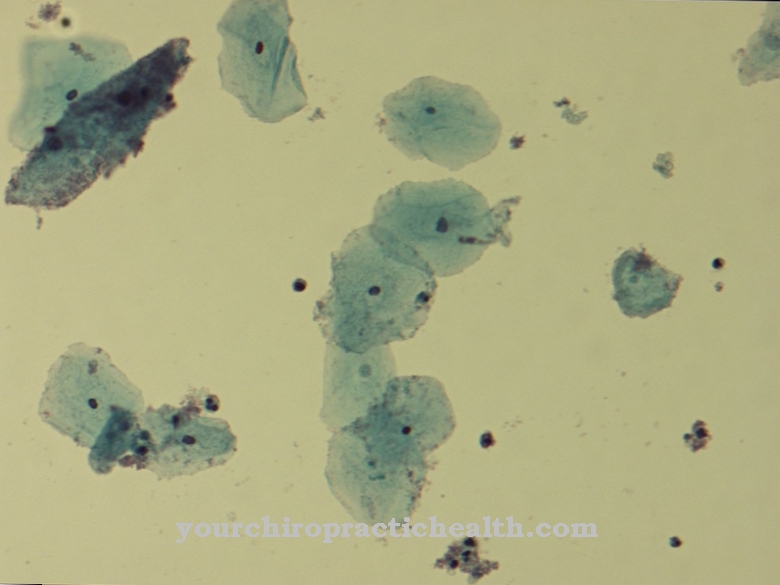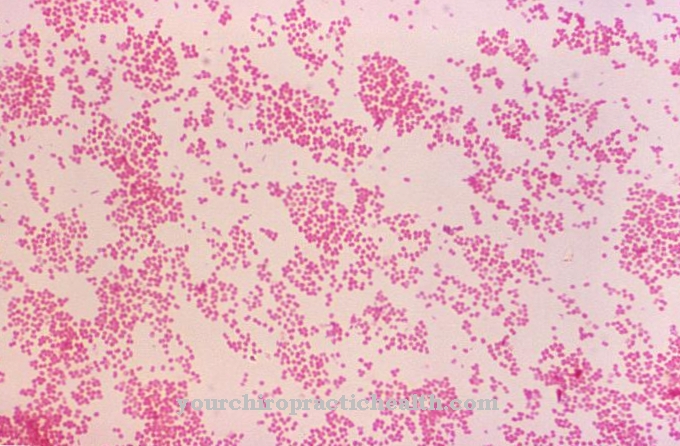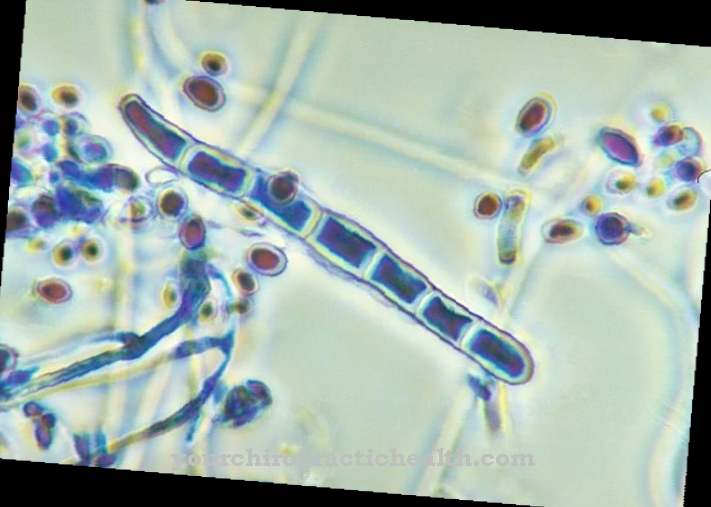Mycobacteria represent a genus of aerobic bacteria. Some of their species cause serious diseases such as leprosy and tuberculosis.
What are mycobacteria?
A genus of bacteria comprising about 100 species is formed from the Mycobacterium or Mycobacterium. The Mycobacteria belong to the Mycobacteriaceae family, of which they are the only representatives. The mycobacteria also include species that have a pathological effect on humans. Mycobacterium leprae is responsible for the development of leprosy, while Mycobacterium tuberculosis causes tuberculosis. Animals can also be infected by mycobacteria with diseases such as bovine tuberculosis.
Mycobacteria can only be insufficiently identified with Gram staining. The structure of their cell wall, however, is similar to that of gram-positive bacteria. This means that the cell membrane is not equipped with an outer membrane and is composed of multilayered peptidoglycan.
About 25 species of mycobacteria are important for medicine. In addition to Mycobacterium tuberculosis and Mycobacterium leprae, they include Mycobacterium bovis and various non-tuberculous mycobacteria.
Mycobacterium tuberculosis was discovered in 1882 by the German physician Robert Koch (1843-1910), who identified it as the cause of bacterial tuberculosis.
Occurrence, Distribution & Properties
The mycobacteria are common in nature. Soils and water are part of their habitats. They are also found in numerous animal species. Only a few species need a special host, so most of them live in the wild. These are mostly non-tuberculous mycobacteria that have no disease-causing effect.
The pathogenic mycobacteria, which are assigned to the Mycobacterium tuberculosis complex, are found as intracellular parasites within macrophages. The germs are protected from outside influences by their special wall structure. This has mycolic acids and waxy substances. The lipids within the cell wall also result in the typical acid resistance of mycobacteria.
Because the structure of the wall counteracts a rapid exchange of oxygen with the environment, the growth and multiplication of the mycobacterium proceed only slowly, which is a typical characteristic of all mycobacteria.
One of the general characteristics of mycobacteria is that they always need oxygen. They also need organic substances, which they use to generate energy. Most of these bacteria are in the shape of a rod. Branches are only sometimes formed in older cultures. In the further course these usually disintegrate into rods or balls (cocci).
Most of the cell wall components act as an antigen component. They trigger an immune reaction within host organisms, which in turn causes a type IV allergy (late-type allergy). In addition, a tuberculin reaction can occur.
Other typical characteristics of mycobacteria are the mycolic acids, the extensive lipid content of the cell wall and the phthiocerol outer shell. Mycobacterium bovis and Mycobacterium tuberculosis also have the so-called cord factor, which enables cord-like or plait-like growth in older cultures.
The long-chain mycolic acids ensure the pronounced acid resistance of the mycobacteria. Due to their special cell wall structure, the germs achieve a strong resistance, so that they are infectious for several months even in the wild, provided that the conditions are favorable.
With a few exceptions, the Mycobacterium proves to be resistant to antibiotics. In addition, there is a pronounced resistance to acids and alkalis.
Physiologically, mycobacteria are short to cocoid rods that are immobile. The rate of growth of the germs is divided into two groups. There are slow growing and fast growing mycobacteria. The slow-growing specimens have a generation time of 6 to 24 hours in laboratory cultures, while it is 1 to 4 hours for fast-growing specimens.
After one week, the rapidly growing mycobacteria can be seen macroscopically as a colony. In the case of the slowly growing pathogens, this process takes up to 8 weeks. Most germs are found among the slowly growing mycobacteria.
You can find your medication here
➔ Medicines against coughs and coldsIllnesses & ailments
Some types of mycobacterium are able to cause serious diseases in humans. People who suffer from a weakened immune system are particularly at risk. Animals can also be attacked by some mycobacteria species, which threaten agricultural problems.
One of the most serious diseases caused by mycobacteria is tuberculosis, also known as consumption. Together with malaria and AIDS, it is one of the most common infectious diseases. Globally, it is estimated that around a third of people around the world have tuberculosis infections. The World Health Organization (WHO) speaks of around 9 million new diseases per year. In addition, about 2 million people die of tuberculosis every year. Around 95 percent of all illnesses occur in developing countries.
The resistance of numerous mycobacteria to antibiotics makes the fight against the infectious disease difficult. In addition, co-infections with the HI virus often occur. For the successful treatment of tuberculosis, it is important to start therapy early, to use antituberculotics efficiently and to prevent the development of resistance.
Another of the most insidious diseases caused by mycobacteria is leprosy. The pathogen Mycobacterium leprae only multiplies at a slow speed, so that it can take months or even years after infection for the disease to break out. The exact transmission routes are still unknown. A droplet infection is suspected.
However, only about 5 percent of all people are at risk of an outbreak of leprosy, as all others have genetic immunity.However, it is possible that the germ could be infected and passed on. Leprosy is noticeable through the formation of ulcers on the face, ears and limbs.

















.jpg)



.jpg)

.jpg)




